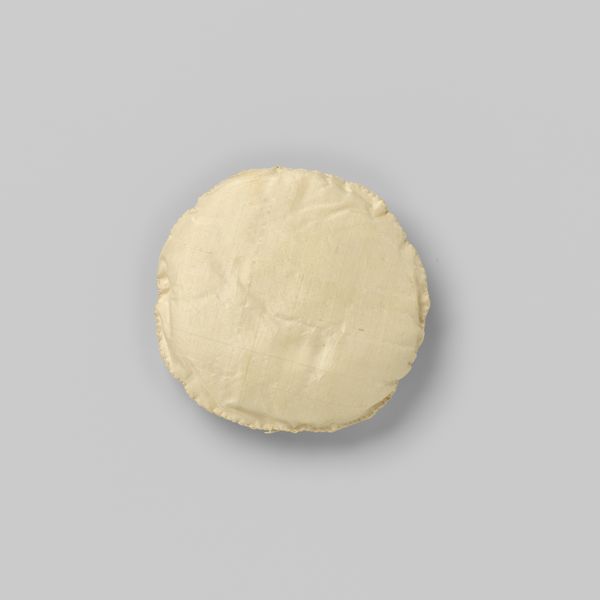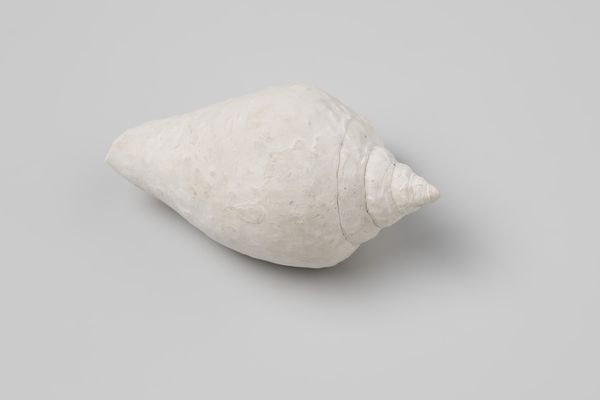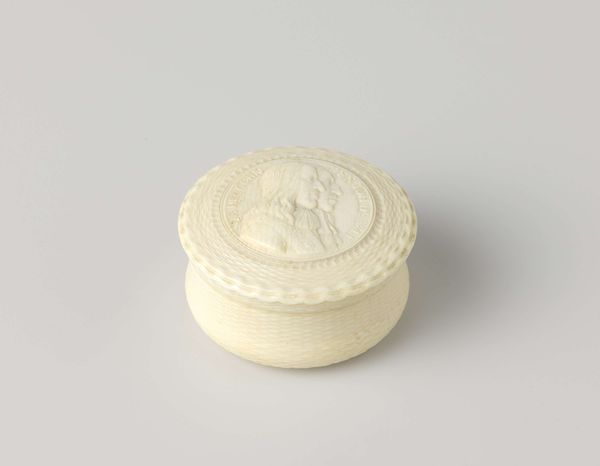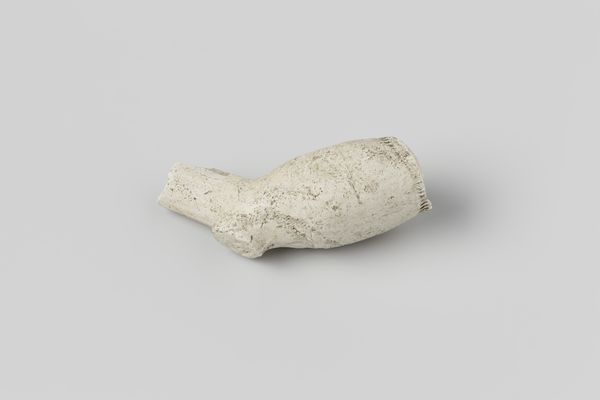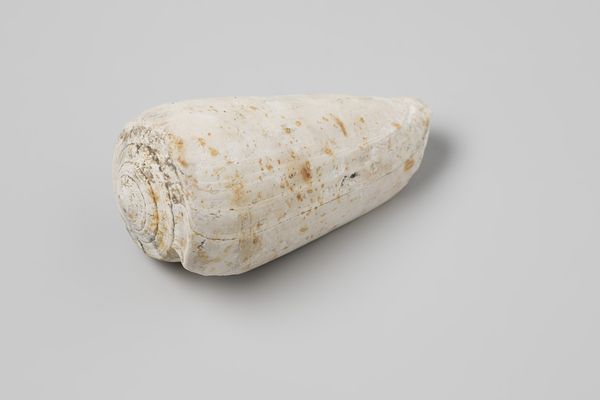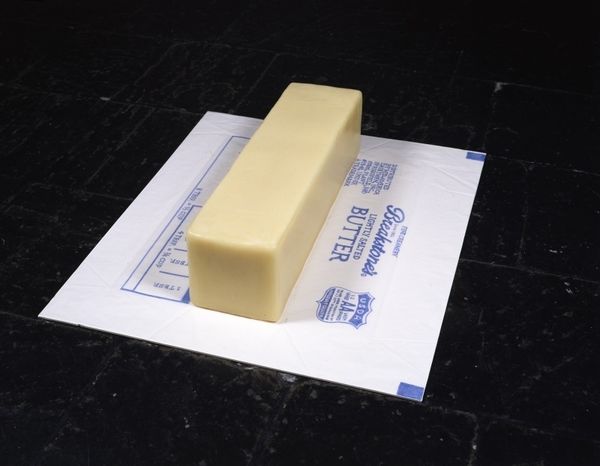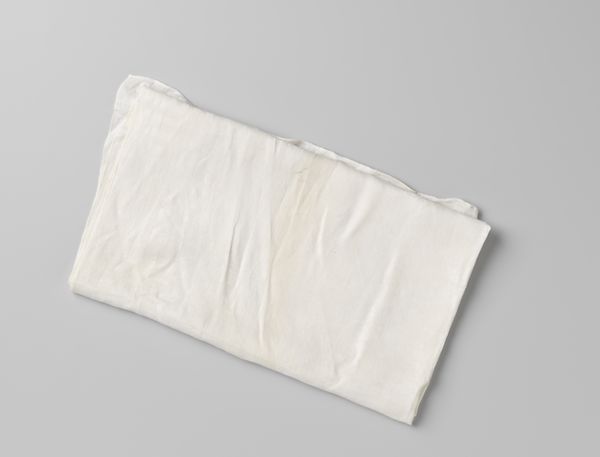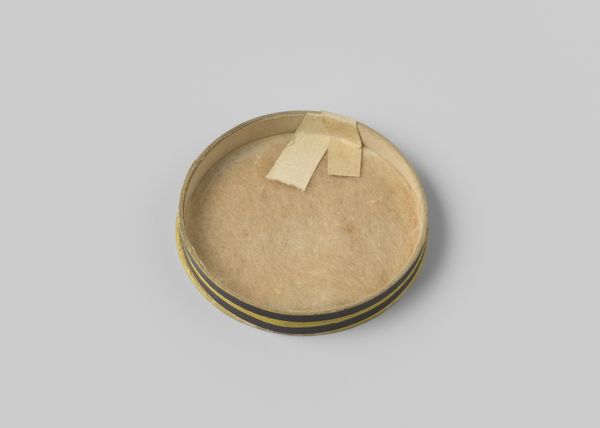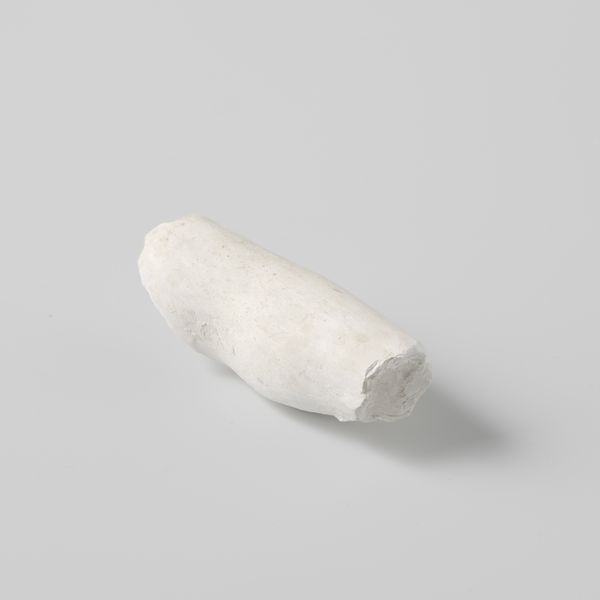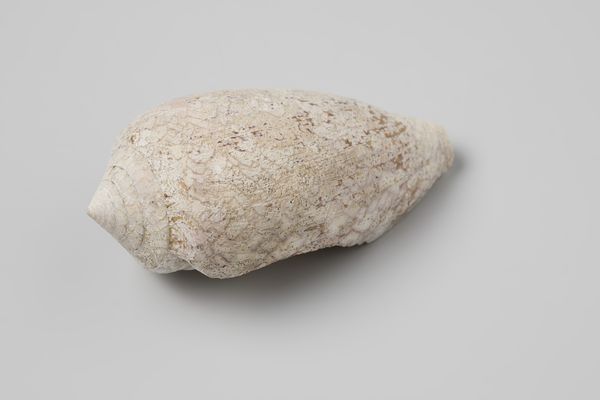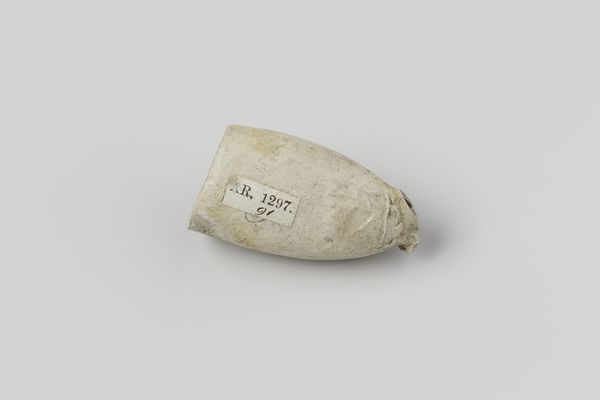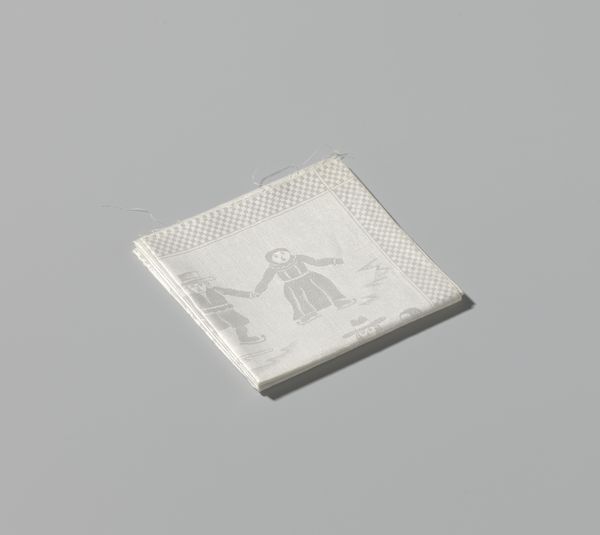
Wit marmeren pin, koppelstuk tussen portret en sokkel van Johanna Cornelia Ziesenis-Wattier c. 1820
0:00
0:00
sculpture, marble
#
neoclacissism
#
form
#
sculpture
#
marble
Dimensions: height 13 cm, width 11 cm, depth 8 cm
Copyright: Rijks Museum: Open Domain
Curator: Here we have a fascinating, albeit fragmented, piece of Neoclassical sculpture. It's a white marble pin designed as a coupling between a portrait and the plinth of Johanna Cornelia Ziesenis-Wattier’s sculpture, dating back to approximately 1820. Paulus Joseph Gabriël is the artist credited with its creation. Editor: It appears incredibly blocky, unfinished even, but undeniably tactile. There's a crude purity to its geometry. I’m curious about the stark geometry and unrefined carving. It looks like a rudimentary prototype. Curator: Given that it is a connective piece, this element provided crucial structural integrity. The use of marble reflects not only an interest in classical aesthetic ideals, which are further reflected in the portraits but also the demands and tastes of the patrons of that time. Editor: Marble, of course, conveys a sense of permanence, but it is also easily manipulated by the craftsperson. There's a semiotic weight here. Is this pin simply functional, or is it meant to be read symbolically as well? Is its rough state and unfinished appearance deliberately referencing anything about social hierarchies or expectations regarding its time of origin? Curator: In terms of materiality, the choice of white marble isn't coincidental. Marble suggests purity and perfection, aligning it to Neoclassical aesthetics. Moreover, we cannot disregard the labour needed to extract the raw stone. Consider also, the economic system necessary to transform that rough rock into this precise shape in Gabriël’s studio. Editor: Yes, quite true; consider also the artist’s technical command of form, weight, and negative space. Even in such a rudimentary object there is consideration paid to basic art composition. What’s more, given the relative proportions, this is but a minor work of the sculptor’s. Curator: This pin makes us question our modern assumptions about high art, and where this functional object can be elevated in our assessment given the skill, materiality, and craft that make it an artwork. Editor: The very nature of the form as a link underscores themes of connection, relationships, and transitions. Intriguing. Curator: Precisely! Even fragments can be incredibly illuminating when considered critically and carefully. Editor: A poignant reminder of what a sculpture entails beneath its finished presentation.
Comments
No comments
Be the first to comment and join the conversation on the ultimate creative platform.
